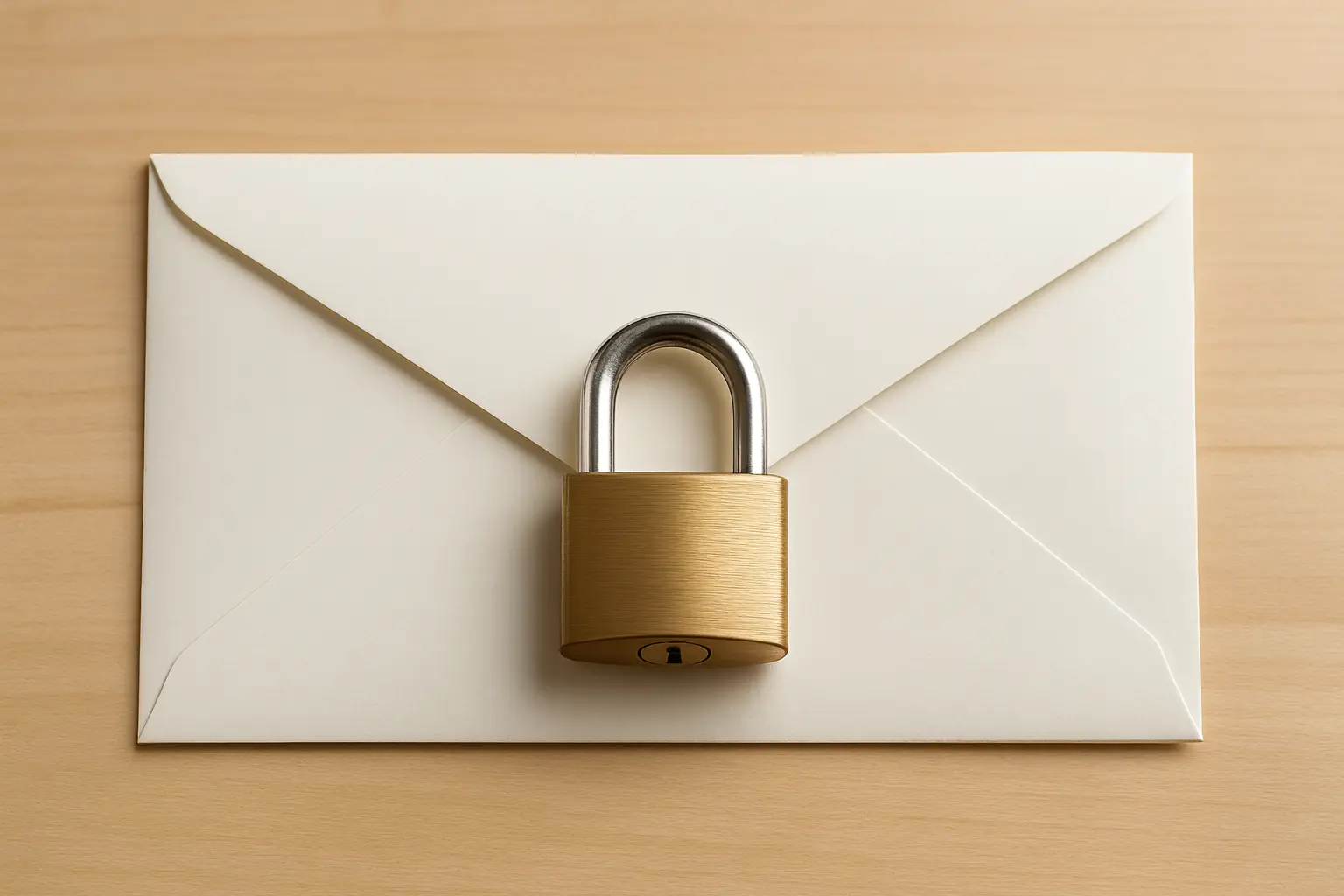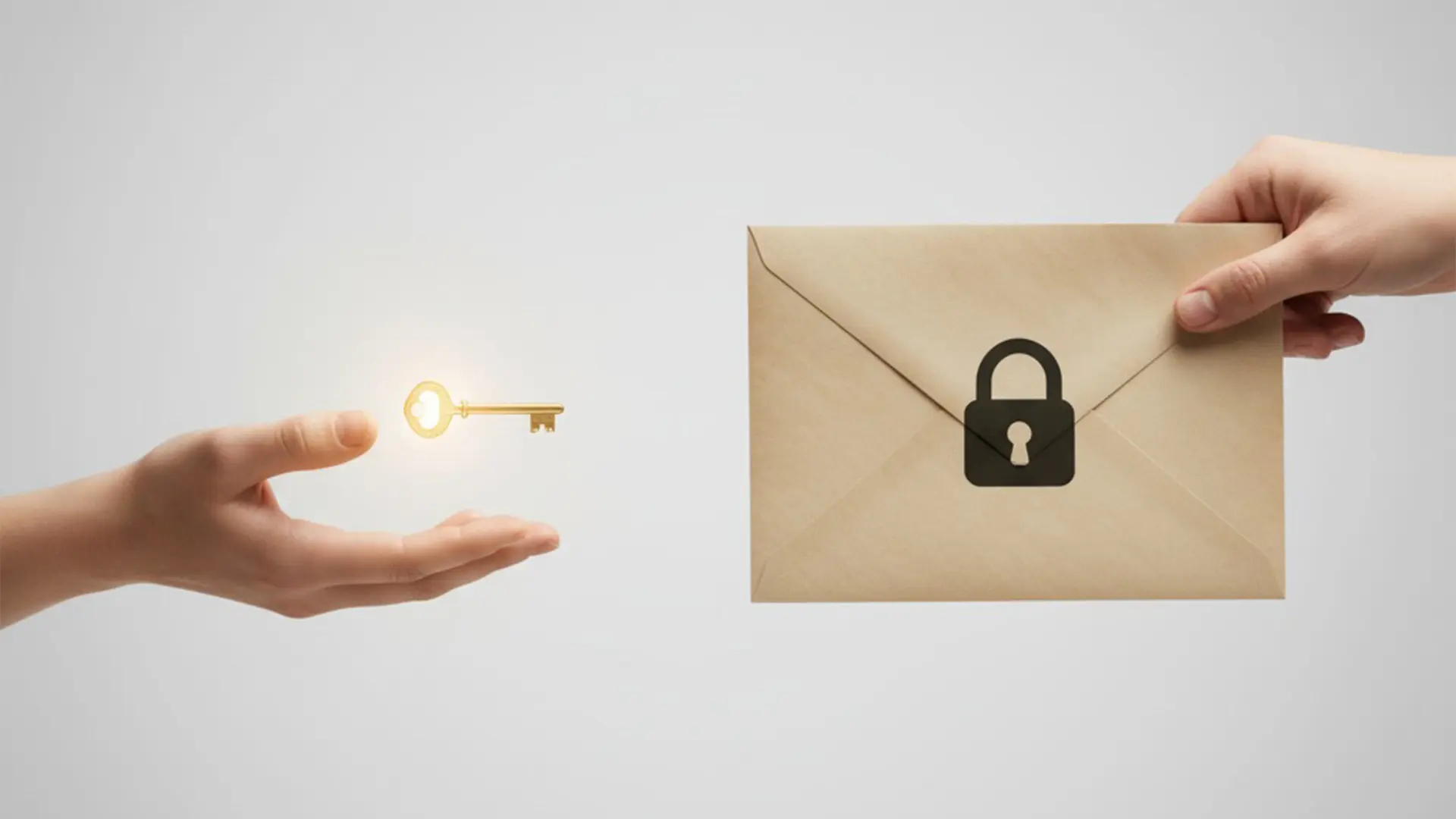How to Email Documents Securely

If you’re wondering how to email documents safely, put the file behind protection. Email works for notes, not for secure document sharing. If you must send documents securely via email, keep details out of the body and use a secure download link.
Email is great for quick updates. Documents should live in links and encrypted files. When risk or size increases, switch to a secure file transfer service for secure document transfer.
Quick Wins: Do These First
Replace attachments with links. Share a secure download link with an expiration date. Fewer files are left on email servers.
Split the secret. Send the file now, and send the password later by text or a call. Deliver the strong password through a different channel.
Check the security. Turn on email encryption and confirm connections are protected by Transport Layer Security (TLS).

Risks of Insecure Document Emailing
Email prioritizes speed, not secrecy. Unprotected attachments increase the chance of a breach. Think of a normal email as a note on a fast conveyor belt.
Unencrypted exposure. Most providers do not enable true end-to-end encryption by default. Intercepted PDF files and spreadsheets can expose sensitive data.
Malware and phishing. Attackers hide payloads in attachments and impersonate trusted senders.
Unauthorized access. A typo in an email address or a compromised account can put files in the wrong hands. Forwarding multiplies the risk.
Compliance and privacy. Strong data protection is expected. Ignoring it harms trust and invites penalties.
Common Mistakes to Avoid
Sending open attachments. Never send important email attachments as plain files. Attachments are often forwarded and can sit on servers for years. Encrypt or password-protect first.
Weak or reused passwords. Use a strong password for protected files and for your email login. Never place the password in the same email.
Too many recipients. Limit access to the intended recipient and those who truly need the file. Use BCC when appropriate.
Skipping address checks. Double-check every email address. For high-risk sends, verify the recipient out of band. Also confirm the recipient’s email carefully.
Ignoring built-in protections. Enable email encryption and two-factor authentication. Prefer email clients and gateways that enforce TLS.
The 3R Framework for Safer Emailing
Reduce what you send by email. Keep details out of the subject and body.
Replace attachments with time-limited links from a secure file transfer service. Set an expiration date and require sign-in or a passcode.
Restrict access with passwords, email verification, and permissions.

5 Methods to Send Documents via Email Securely
These steps help you keep control while sending documents via email.
- Password-Protect Your Attachments
Create encrypted files or add a password before you attach. A password-protected PDF is quick, and AES-encrypted ZIP archives work well. Choose strong encryption and manage keys carefully. Always deliver the password through a different channel. Never include it with the file. Also password-protect PDF files when needed with a strong password. - Use Encrypted Email Services
For sensitive conversations, use services with end-to-end encryption. Only you and the intended recipient can read messages and attachments. If your organization supports S/MIME or PGP, pair them with rights controls. - Send Secure Links Instead of Attachments
Upload the document to a secure file transfer service and share a secure download link with an expiration date. You can revoke access if the wrong link is sent. Add email verification or a passcode for the recipient.
A service such as Filemail provides secure cloud storage, link expiry, optional passwords, and real-time tracking. Keeping the file off email servers reduces exposure. - Use Email Encryption and Rights Controls
If your organization supports email encryption like S/MIME or PGP, use it with compatible clients. Rights controls can block forwarding, copying, downloading, or printing. Gmail Confidential Mode and Outlook’s Do Not Forward add access controls, but they do not provide true end-to-end encryption. - Use a Dedicated Secure File Transfer Service
For large or highly sensitive files, a specialized tool is recommended. Services like Filemail are user-friendly, offer secure cloud storage, virus scanning, link expiry, passwords, and analytics.
Use the web app, mobile app, or Outlook add-in with drag-and-drop. You can send a secure download link without requiring recipients to create accounts. This keeps your data secure and limits exposure on email servers.
Compare Filemail plans to choose the right security and storage options for your team.

Why Choose Filemail for Secure Document Transfer
Secure by design. Filemail encrypts data in transit and at rest on secure cloud storage. Business plans can enable end-to-end encryption for zero-knowledge protection.
Frictionless sending. Free users can transfer up to 5 GB. Business and Enterprise tiers lift size limits and extend retention.
Proof and control. Set passwords, expiration dates, and download limits for every link. Track activity in real time.
Built for the way you work. Use the web app, mobile app, or Outlook add-in with drag-and-drop. It works alongside common email clients and existing document sharing workflows.
Security features that matter. Automatic virus scanning, region selection, audit logs, and policy controls keep data secure. Many cloud storage services add convenience, but Filemail puts control first.
Learn more about Encrypted transfers, and see Why Email Is Not Secure for deeper context.
FAQs
Is it safe to email documents like bank statements or IDs using popular providers?
Major providers encrypt the connection to their servers, which helps. Most do not provide end-to-end encryption, so servers can still access content. For confidential documents, add a password or send a secure download link.
What types of documents should I avoid sending through standard email?
Avoid files that include highly sensitive information such as financial records, government IDs, medical data, or passwords. If you must send them, use encryption or a secure transfer link.
How is using Filemail different from attachments?
With Filemail, you upload to secure cloud storage and share a protected link. You can apply passwords, set an expiration date, and track downloads in real time. The file does not travel through multiple email servers, which reduces exposure.
Does Outlook or Google Workspace have built-in options?
Yes. Outlook supports email encryption and rights management. Gmail offers Confidential Mode with expiry and SMS passcodes. Use these together with secure links for stronger protection.
See pricing and features to pick the plan that fits your team.

